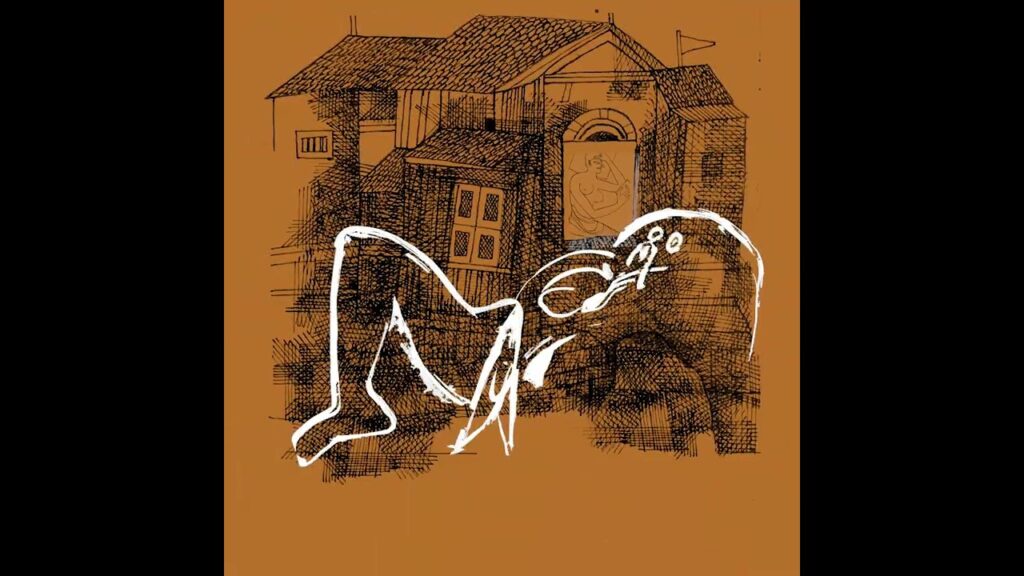
Sarmaya – Re-imagine
‘Re-imagine’ a series that I had chance of curating and co-creating during my stint with Sarmaya. We made connections across the Sarmaya collection and examine the extent to which our ways of seeing — and an object’s own meaning — are informed by time, space, and context.
Sarmaya is a museum with a collection that represents the diverse histories and artistic traditions of the Subcontinent. The archive is based in Mumbai, India.
Genre
Film, Animation, Art Archive, Collage
Re-image 1
Interpreting objects is often a personal process. It comes from a space within, as responses to forms, sounds, visuals, and narratives. Every interpretation is unique, an amalgamation of distinct experiences, memories, thoughts and imaginations.
Wild Sport
We look at a colonial hunting scene borrowing across the Sarmaya collection from photographs, miniatures and indigenous art. Stealthily walking through a dreamy forest created by contemporary artist Jethro Buck, are a group of hunters from an 18th-century miniature, closing in on a lion. In strolls a mighty tiger, resplendent in motifs from Santosh Kumar Das’s Mithila landscape, asserting its rightful place in the forest. The real and imagined come together in this piece to create a play on perspective and to remind us that we share the planet with majestic creatures that need to be respected, cherished and granted their freedom.
Koli
Holding a fishing net painted in the Warli style, facing a dark, rough seascape, stands a fisherwoman. Her net is cast wide and repeatedly, engaged in a battle with silver Larins, coins that were once a currency among tradesmen of the Arabian Sea. The Larins, imagined as fish, dodge and weave, attempting to evade capture. A photograph, a piece of Warli art, an engraving, and coins come together from across genres, artists and epochs to convey our appreciation for the people who bring us gifts of the ocean and brave its perils.
Jeypore
A paean to the Pink City, this piece from our reimagine series strings together rare books, photographs and art selected across time from the Sarmaya collection. A tiger from contemporary artist Jethro Buck’s Ways of seeing Tigers strolls into the gates of the 17th century Amber Palace. Paintings of precious enamelled objects that flourished under the reign of Maharaja Man Singh are found in the most uncanny of places. A large necklace (Aad) hangs atop the building, delicate blue pottery vases are found across the frame as an enamelled boat floats by. Stepping out of a late 19th century photograph, local residents hang out against this opulent, surreal backdrop.
Lines that speak
This piece follows a play of lines borrowing from the works of some exceptional artists in the Sarmaya collection. It begins with a languid figure from Jogen Chowdhury’s Love Letter. The calmness embodied by this figure is overlain with Saubiya Chasmalawala’s garbled letters from the Arabic script – repeated until rendered meaningless. Framing this is a bird call, which quickly reveals itself as a swan taking flight from the window of Badri Narayan’s Hamsa Jataka. We encounter a universe that is consumed by lines similar to Saubiya’s but with larger, angular strokes. The busy but gentle canvas is then juxtaposed with Souza’s bold, provocative figure, which supplemented with the call of the bird creates an eerie, imposing atmosphere.
Vahans
In this playful piece, we explore motifs used within Mata ni Pachedi textiles in our collection, travelling across objects from various time periods and artists from different generations. We welcome Bahuchar mata mounted on her vahana, a rooster, to a chaotic street in a modern cityscape. Journeying alongside contemporary modes of travel – auto rickshaws, cars, trains and planes, they are unable to escape the familiar navigation tool that defines our everyday life – Google maps. This piece is also telling of the visual transformation taking place in the artform. While Bahuchar Mata drawn by Sanjay Chitara celebrates modernity through an evolution of the traditional designs of a Mata ni Pachedi textile, his son, Sumit Chitara goes on to contemporize the canvas entirely, focusing on elements of urban city life.
Dance
In an ode to dance forms, dancers, and the sheer joy of dancing, we bring you this jugalbandi inspired by the Sarmaya collection. Grooving along to Kishore Kumar’s classic Eena Meena Deeka is this hip group from Dibin Thilakan’s We Love We Would Like To Dance, while a musician from the royal court of Jaisalmer plays his sarangi. The gods from a Pichwai painting soon join in from their celestial planes. An Indian classical dancer twirls into the frame, leaving us all mesmerized. The jingle of her ghungroo subdues the music and cues a melodious classical tune. This quiet moment soon passes as Santosh Kumar Das’s Embracing Couple waltzes into the frame adding a contemporary twist, joined once again by Dibin Thilakan’s dancing couples.